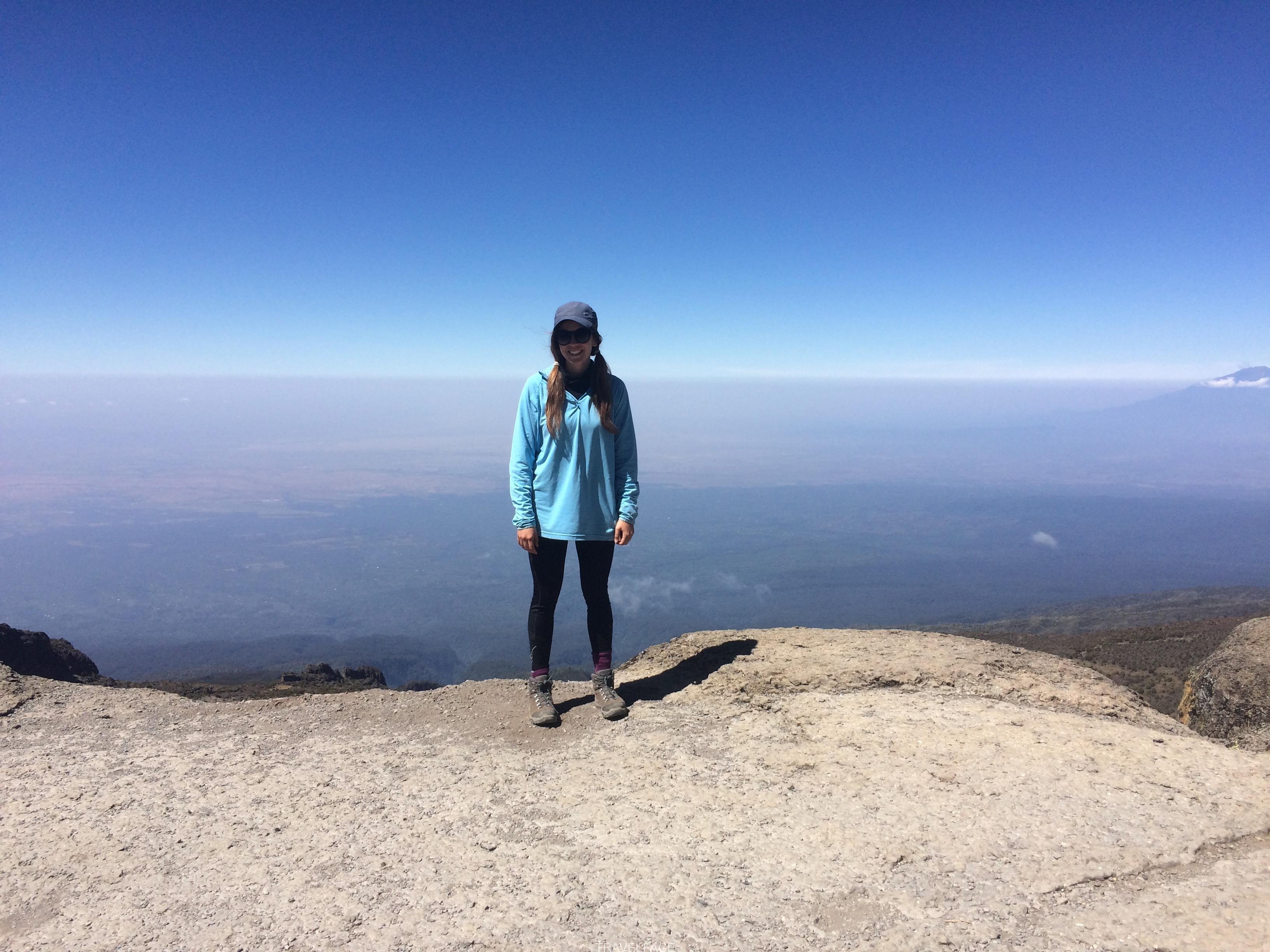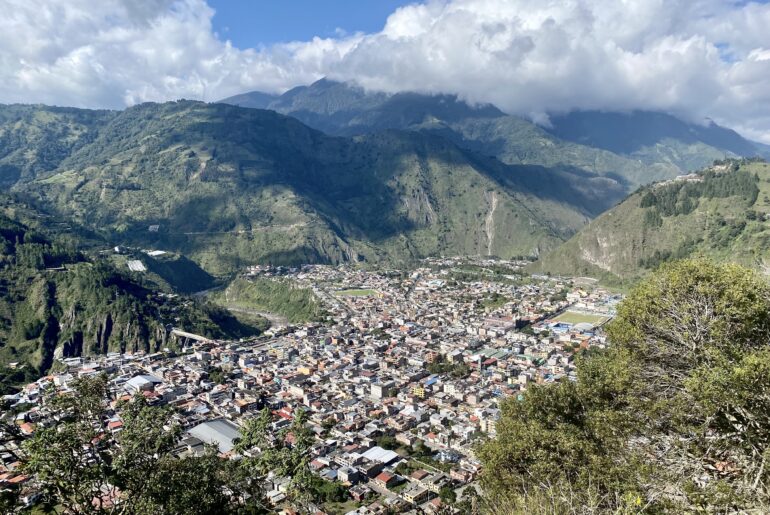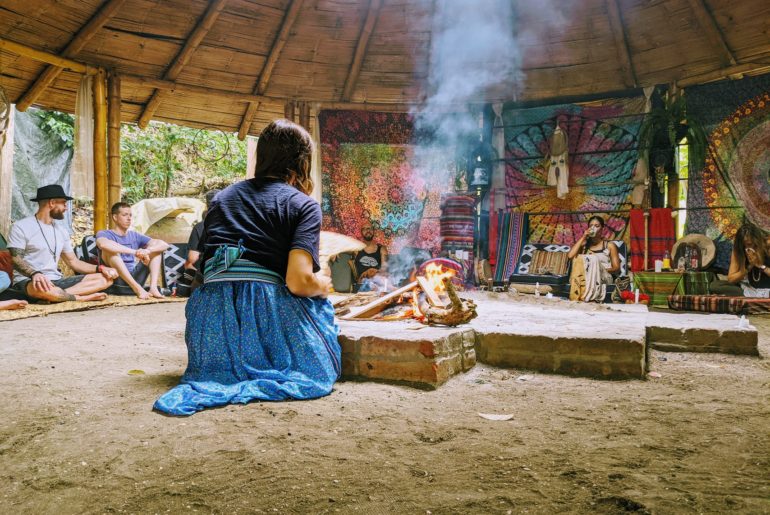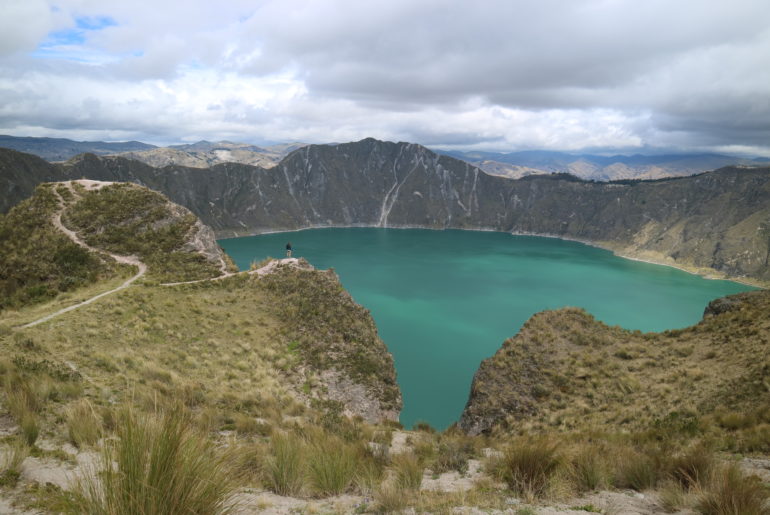‘You’re off to Great Places! Today is your day!
Your mountain is waiting, So… get on your way!’ – Dr. Seuss
A wet training climb up Pen Y Fan in my basic waterproofs that caved within a couple of hours finally persuaded me. I had not given the Kilimanjaro packing list much thought at this point, but as I stood ringing out my sodden waterproofs I searched my mind for what options I had in my limited hiking wardrobe. D of E was a distant memory that brought to mind eating more mars bars than miles; the smell of meth and shortcuts ending in cow fields or waist deep bogs; the gear swallowed into the depths of my parent’s garage long ago. Likewise my more recent hiking experiences had either been local, or sporadically whilst travelling, meaning I made do with whatever I had on me. With a few hikes planned, including Kilimanjaro, it was time to face learning the language of technical gear and decide what to invest in.
Merino wool, base layers, mid layers, zip offs, gaiters, carbon fibre… These are just some of the words foreign to me until I did my research. It can be overwhelming, especially when you see the cost of some items! However it does not have to be expensive. Preparation is key. Do not be the person who ends up unable to walk due to horrific blisters or is ill from getting cold and unable to enjoy the journey. Better to find the middle ground between this and having all the gear but no idea.
Below is my packing list. Some of these items were loaned from a friend who had previously climbed Kilimanjaro. Always ask around. I am relieved I invested in items for this trip though, as they have been used multiple times since.
Click to go to specific sections:
main items
clothes
toiletries
First aid
random items
Snacks
I have also made comments by items I took, but probably did not need.
Some general points
- Pack for the season you are going in. I went in October.
- Warmth and worn-in shoes are key.
- You can definitely pack less if you would like, this is just what I took. Work within the limit as much as possible for the porter (maximum 15kg). Before long you will be in awe of their fitness as they power ahead.
- Outdoor shops often hold a wealth of possibility and knowledge, even if you end up finding cheaper deals online. Ask for advice and find out your options!
- Gym gear can work, especially synthetic tops. They will smell quicker. I would avoid cotton.
- Shop around (in the UK Decathlon, Aldi and other supermarkets often have good deals).
- Keep your phone on airplane mode and sleep with electronics to prevent the batteries draining. Wear them on inside layers when summiting otherwise they will drain.
- Your company may offer gear loan options. Personally I did not see anything in Arusha but I have read there are some shops there, no idea of the quality. There are a few stands at the start of the trek, what you suspect are items left behind or donated to porters and sold on.
MAIN ITEMS
- Important documents in small ziplock bag including passport, and backpacker’s travel insurance with emergency evacuation up to 6000m. I used True Traveller and it was around £50. Read the small print and more importantly invest in the right insurance. It costs you more for a reason.
- Money: I only needed to bring some for tips during the hike as everything else was included. Have these prepared in envelopes, and follow your company’s recommendations. I found that the tip culture in Tanzania is well-established and generally guidelines are given.
- Hiking shoes: well worn in! Some people wore hiking shoes without ankle support. Wear what works for you.
- Hiking poles: mine are lightweight carbon. Pack your poles in your main bag when flying. I like walking with poles but it is up to you. There is no point if you do not practice walking correctly with them. It does help on the descent, especially after summiting. I had to link arms with one of our porters, and we held one pole each to get down the scree slopes without me falling every two seconds.
- Day pack: Practice wearing it to make sure it fits correctly. You will be carrying what you need each day. For example your valuables, water, snacks, any extra layers, sunscreen and waterproofs.
- Borrowed sleeping bag and silk sleeping bag liner: I would recommend a liner for two reasons. It helps keep you warm, and as I borrowed a sleeping bag from the company I went with, it was nice to have a layer between me and the bag. My company charged to loan the sleeping bag.
- My 65L North face duffel: Most companies request you bring a duffel to make it easier for the porters to carry. If you bring your own put a ribbon or some kind of sign on it to distinguish it from the many other duffels you will see at the airport. For me this size works fine but I often just left the sleeping bag separate as it went in a plastic bag with the duffel the porter carried. It is similar to this one: https://www.thenorthface.co.uk/shop/en-gb/tnf-gb/base-camp-duffel-medium-cww2
- Packing cubes to organise my gear.
- I had a 2L camelback. Personally I drank around 5 litres a day so this was nice to use whilst on the move. Despite following tips such as keeping the valve inside my pack, it froze and added weight on summit night. I would recommend to take one or two 1L bottles for this. Store them in your pack and keep socks round them to reduce chance of freezing.
- I also took my SIGG aluminium bottle (1L). I filled it with boiled water each night to keep warm in my sleeping bag and then to be able to drink 1L in the morning before heading to breakfast. Usually I’d drop my Vit C tablet in for some flavour.
Clothes
- 2x pairs of hiking leggings: aka gym leggings. I prefer to hike in these. Plenty of people do. Mine are by Tog 24.
- 1 x pair of borrowed hiking trousers with zip ventilation. I did wear these but could have made do with two pairs.
- 3 x merino base layer long sleeved tops: Wearable multiple times without smelling and good for all temperatures. They are worth the investment as merino is breathable, antibacterial, insulating and lightweight. Mine are by Icebreaker and Decathlon. They have lasted me for a few years so whilst the initial cost can make you cringe (especially for popular Icebreaker), they are a good investment if you can afford it. I slept in what top I planned to wear the next day.
- 1 x ‘mid layer’ long sleeved top: A Tesco supermarket special I wore most days.
- A fleece: A basic one does the job.
- 1 x merino thermal leggings: I also used for pyjamas. Mine are from Decathlon.
- RAB fleece pants: These were useful to sleep in at higher altitudes, and worn on summit night.
- Windbreaker/ waterproof: Mine is by NorthFace and uses a similar material to Gore-tex.
- Waterproof trousers: A cheap pair I have owned for years. I did not need to use them as it did not rain but a handy layer on summit night.
- 3 x merino wool socks: one thicker pair I wore at night and when hiking at the higher altitudes.
- 3 x sock liners: Personally I always wear sock liners under my hiking socks to prevent rubbing.
- 2 x merino underwear.
- 2 x sports bras: Low impact is more comfortable.
- A couple of pairs of normal socks
and underwear for the evening. - 1 x down puffer jacket with attached stuff sack. Purchased from Decathlon a few years ago, as it was cheaper than everywhere else I looked, and had good reviews. I often wore this in the evening and on summit night under my windbreaker.
- 2 x buffs. Glad I had two, one covered my hair and the other worked well to cover my neck or pull up when cold or dusty. My friend had lent me a face buff that I wore with these buffs on summit night, as I was so cold.
- A warm hat with ear flaps ideally.
- 1 x baseball cap.
- Sunglasses.
- 1 x thin gloves and 1 x thick gloves for summit night.
Hand and feet warmers.These did not work so I do not think I would use them again!- Pair of lightweight Nike trainers to wear around camp.
Gaiters.These were loaned to me. I would not personally bring them again just because my boots ended up getting dust inside anyway, and they were quite hot to walk in.
toiletries
- Toothbrush, toothpaste and deodorant.
- Microfibre towel for washing face in the morning.
- Tangle teezer hair brush. Hair ties. French plait if you have long hair.
- Baby wipes to freshen up. Needed but at times it felt more like I was exfoliating with the amount of dust on me. The shower back in Arusha confirmed that I was not that tanned, it was just dirt.
- Face wipes or whatever skincare product you use. Not essential, you can go without or stick to baby wipes.
- Moisturiser: Your skin will become dry.
- Lip balm: As will your lips.
- Small bottle of 50 SPF sunscreen: You can get ‘high altitude’ sunscreen too.
- For girls: panty liners: a great tip to keep underwear fresher for longer.
- I brought some tampons and sanitary towels ‘just in case’.
- Eco friendly/ fragranced sanitary bags that are not see-through. These are handy to put any toilet paper in also.
- TOLIET PAPER: Take the roll out to make it lighter or buy the ones in packets. Tissues can also work but save some for your nose. If you have a portable toilet there will be paper.
- Nail brush: A luxury item. Your nails will get dirty quickly. It is nice to use this morning and night.
First aid kit
- I do not take diamox. Read why here.
- Anti-malarial medication: if you are staying in Tanzania before/ after. As mosquitos disappear after the first day hiking I would not worry about bringing mosquito spray on the trek.
- Hand sanitiser: One bottle should be enough.
- Rehydration/ electrolyte sachets: Handy to flavour water and they can help with headaches.
- Dissolvable vitamin C tablets: It is also a nice flavour for your treated water.
- Throat lozenges.
- Water purification tablets. I use Lifesystems Chloride Dioxide tablets and tend to take two packs. Most companies filter your water with a pump but it is recommended to add tablets to be on the safe side.
- Antibiotics: I asked my GP in advance. I had a general one to cover everything else like traveller’s diarrhoea.
- Antiseptic: e.g. savlon. Not essential but useful.
- Painkillers: Paracetamol. Iburofen apparently can work similarly to diamox. I just took it whenever I had a headache what was quite frequently.
- 4Head: personally I find this a lifesaver to help relieve headaches alongside painkillers.
- Loperamide (diarrhea relief) and laxatives (for constipation): Always handy to have.
- Tiger balm: great for everything from aches to bites.
- Compeed blister plasters/ plasters/ bandage/ tweezers/ nail scissors/tape: the standard stuff. Most trekking companies should have a first aid kit with the basics, along with a pulse oximeter and diamox. Do not rely on this though.
Random items
- Extra batteries if needed.
- A couple of locks for my duffel.
- A journal.
- * Did not take but would recommend: a collapsable camping light to hang in your tent. I was lucky to be lent one from someone in my group.
- Headphones: And a decent playlist or two.
- Head torch: Needed to navigate around your tent and the campsite.
- An self inflatable sleeping mat: I was loaned this from a friend. It was handy as it rolled smaller than a foam one.
- Duct tape: Handy to fix gear, tape feet etc but not essential. First aid tape is better for hot spots.
- A guidebook and fiction book: I read a lot at camp each day. However I would take kindle to reduce weight next time.
- Phone for music and photos.
Portable solar charger.This charger was not good at solar charging, but I only spent 15 pounds on it. On my trip to EBC I invested in an Anker and would recommend one of these or investing in a better solar charger.- SLR and charger: I debated this but am pleased I took it. The scenery is unbelievable and it is fun to experiment with night shots.
- GoPro with a spare battery, stick, head strap, wrist strap and charger: I think a stick and backpack clip would be sufficient accessories.
- Casio watch: also my alarm.
- Black garbage bags: for sleeping bag, and dirty clothes.
I was gifted a penknife from one of my group members (thanks Bob). I would not say you need to bring one though.She wee. Borrowed but never used. I felt fine going outside and carrying any toilet paper to camp to dispose of. I was told to consider Vicks to put under my nose if I struggled with the smell of the public toilets.- Consider- gifts for the porters! You can leave this with the company to bring at the end. Consider gear you do not need, to bringing t-shirts, socks, gloves and even boots. By the end of the trip you will be so grateful for all their help. When you see what some hike up in you realise how lucky you are to have access to decent gear.
Snacks
I took too many. One snack a day is probably sufficient dependable on how much you eat. Often you eat a provided snack when arriving at camp, such as popcorn. Check with your company though.
Examples of what I brought:
- Ginger biscuits were a nice snack and easy to share around (ginger is good for sickness- we also had ginger tea and ginger soup!)
- Trek bars.
- Clif bars: I liked the peanut butter and white chocolate with macadamia flavours.
- A couple of SIS energy gels for summit night.
- PIP almond butter sachets: probably my favourite snack and easy to consume.
Hopefully this list is helpful. It is similar to my EBC packing list. I took another small day pack that fitted in my duffel at check-in, for safari and Zanzibar clothes, plus toiletries. It was also a handy day bag. I left this with the company in Arusha whilst climbing Kilimanjaro.
Often companies do a gear check the day before you depart. This can help ease any worries you have.
Happy trekking!

read more about my time in tanzania and climbing kilimanjaro





3 Comments
This la great! I love the fact that you have written a list. It is so helpful! I bet Kilimanjaro was wonderful!
Yes it is such a unique experience, I hope it comes in handy for you!
Pingback: KILIMANJARO: SOME QUESTIONS ANSWERED - travelface